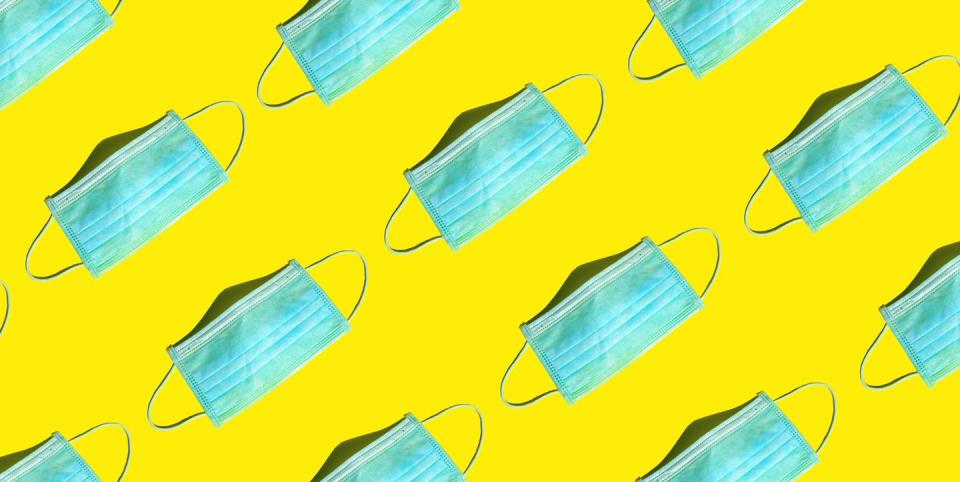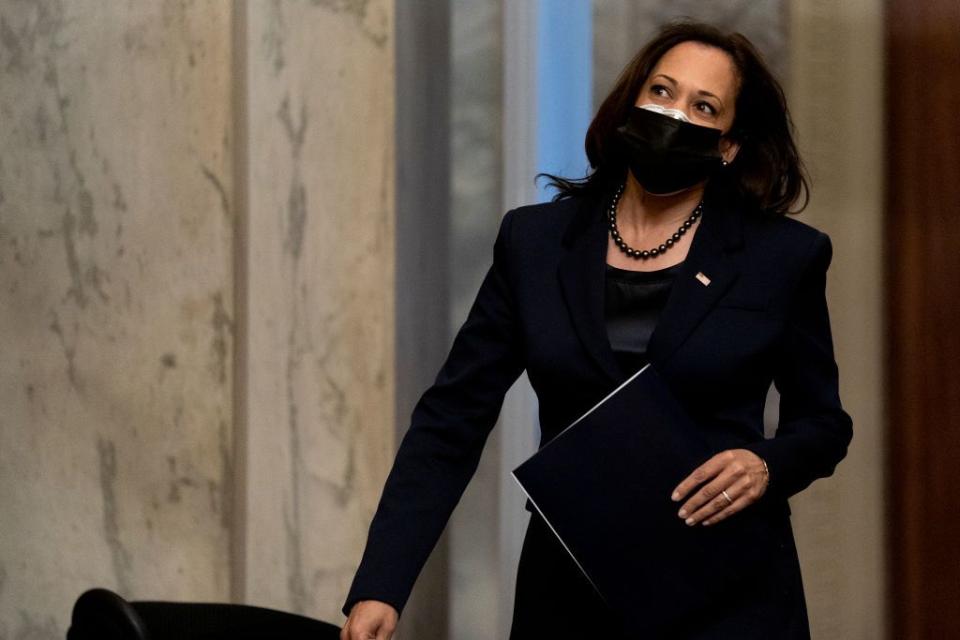Is There Any Point in Wearing Two Face Coverings, Aka 'Double Masking?'

Seen any photos of the great and good – including US Vice President-elect Kamala Harris and everyone's favourite 'zero tolerance on breaking social distancing rules' actor, Tom Cruise – layering two masks on top of each other? If so, you might have wondered if there's a benefit in doing so.
Recently, immunologist Dr. Anthony Fauci, now chief medical adviser to President Joe Biden, told NBC: 'If you have a physical covering with one layer, you put another layer on, it just makes common sense that it likely would be more effective, and that's the reason why you see people either double masking or doing a version of an N95 [a high grade mask which filters at least 95% of airborne particles].'
But ‘Double masking’, as it's been dubbed, isn't something that has been widely recommended by any health body, such as the NHS. The advice, however, is that your mask is made up of at least two layers of fabric. The WHO recommends that your fabric mask is made up of three layers, including one which is hydrophilic, such as cotton, which means it will easily absorb droplets from your exhaled breath and should be the layer which touches your mouth.
So, does wearing two face coverings confer any sort of benefit?
What's the idea with 'double masking?'
Like you know, face masks or coverings reduce the spread of germs by preventing most respiratory droplets in your breath from passing through the fabric. As COVID-19 is transmitted through aerosol droplets that come out of your mouth and nose, if you do have the virus, masking up means that there’s less of a chance you'll pass it on.

The idea behind double masking is that more layers of mask mean that fewer droplets can get through.
What do doctors think about 'double masking?'
Dr Anita Kapoor is a GP working in North Lincolnshire. She said that using two masks is not necessary to prevent the spread of COVID-19, so long as yours is of good quality.
'One face mask is enough as long it meets the standards – it should be:'
Made with two to three layers of tightly woven, breathable fabric
With inner filter pockets
Fit properly. That's snugly around the nose and chin with no large gaps around the side of the face
If you do have a flimsy or thin face covering, then there could be more of a reason to do the double. Speaking to the New York Times, Linsey Marr, an expert on virus transmission at Virginia Tech, noted that, in such instances, 'if you combine multiple layers, you start achieving pretty high efficiencies'.
This sentiment is echoed by Dr Hena Haq, a GP based between London and Kent.
'It seems that in selective cases double masking may be effective in reducing transmission, but this would be more beneficial where the masks are porous for droplets to still pass through the different layers. Surgical masks [however] are tightly woven, and it’s unlikely two masks of the same will be beneficial,' she explained.
Dr Kapoor also noted that, in some cases, an additional mask is added on top of a medical-grade face covering to increase their durability. However, this isn’t necessary for the general public who 'shouldn’t use medical masks because they should be conserved for medical professionals'.
So, how should I best protect myself and others from the virus?
Dr Haq said following NHS guidelines is the best way to protect yourself from the virus:
'What has been shown to be most effective is a combination of hygiene behaviours. Masks in combination with appropriate behaviours e.g. best fitting mask, not removing and adjusting the mask, not touching your face, nose, or eyes with hands, as well as hand hygiene and washing hands regularly will be most effective.'
As long as you pick a face covering that’s good quality, is made up of two or three layers and fits properly, wearing one mask whenever you’re likely to be around people not from your household should be enough protection.
If you are concerned that yours is made of too few layers or is flimsy, though, then there's no harm in wearing two – so long as they both fit snugly.
Cut through the noise and get practical, expert advice, home workouts, easy nutrition and more direct to your inbox. Sign up to the WOMEN'S HEALTH NEWSLETTER.
You Might Also Like

 Yahoo Finance
Yahoo Finance 